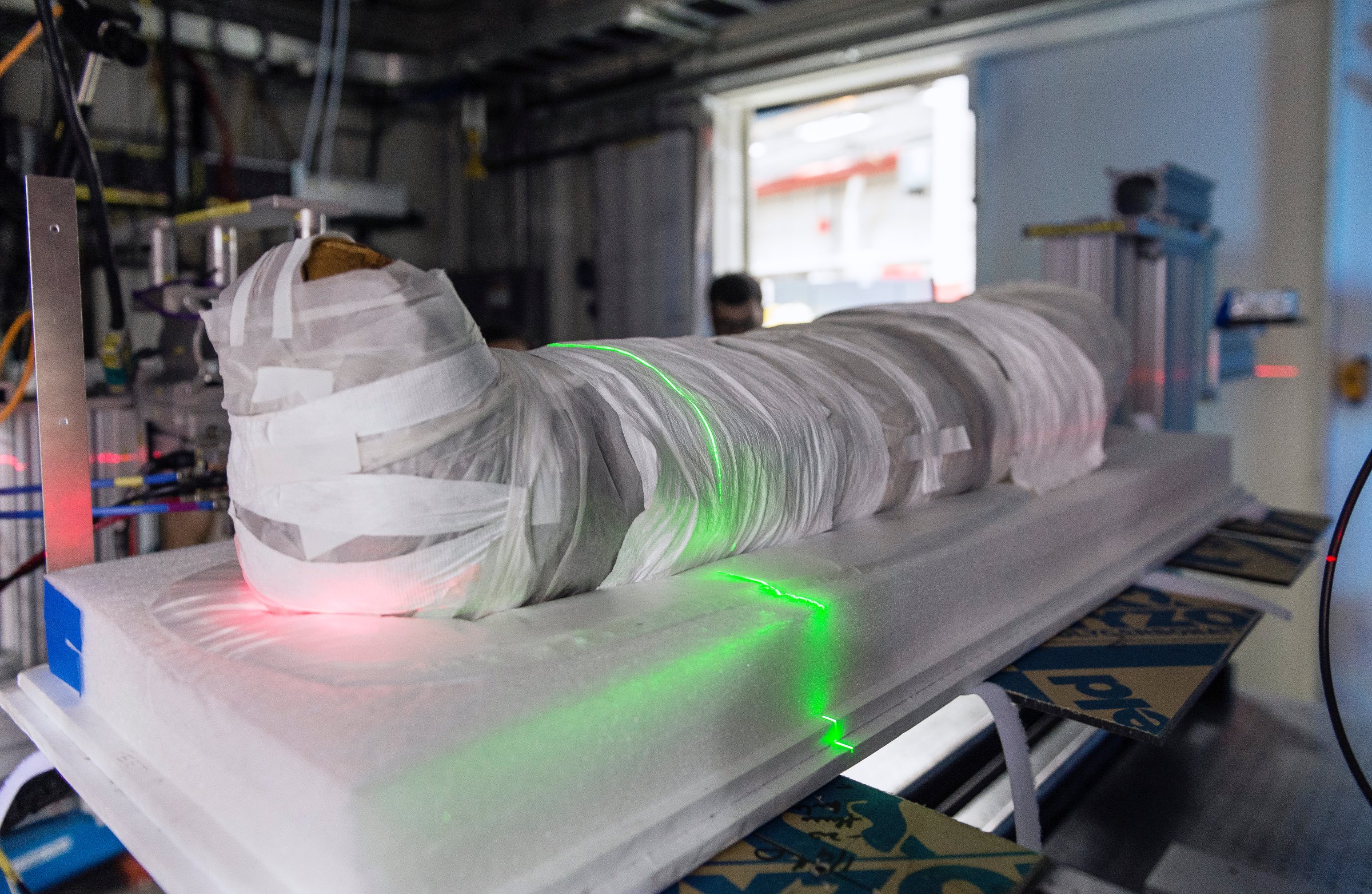
Scientists are using highly powerful X-rays to examine a mummy from ancient Egypt, hoping to find secrets about the nanostructure of Ancient Egyptian bones that might benefit modern medicine.
A team at Northwestern University in Chicago is conducting the experiments, which allow researchers to see details of the mummy’s insides without removing its delicate wrappings. The team is hopeful that the results could help to predict bone fractures before they happen.
“We have some preliminary findings about the various materials, but it will take days before we tighten down the precise answers to our questions,” said experiment leader Dr. Stuart Stock, research professor of Cell and Molecular Biology at Northwestern, in a statement.
“I wanted to compare populations who had an active lifestyle with our more modern sedentary populations,” Stock said. “Is there a difference in bone quality?”
Current medicine, he said, can only predict bone fractures with 80% certainty. If this experiment proves successful, he hopes that certainty might raise to 95%.
According to Stock, bones contain a high density of nanocrystals, which scatter X-rays in different directions depending on the way they are arranged. Examining the sample with an X-ray allows scientists to interrogate the bones’ structure.
“If you know the angles and relative intensities of these diffracted beams, then you can identify what material it is — it’s like a fingerprint,” Stock said. “As far as I know, no one has tried to non-invasively interrogate what’s inside an object like this.”
More Must-Reads from TIME
- Donald Trump Is TIME's 2024 Person of the Year
- Why We Chose Trump as Person of the Year
- Is Intermittent Fasting Good or Bad for You?
- The 100 Must-Read Books of 2024
- The 20 Best Christmas TV Episodes
- Column: If Optimism Feels Ridiculous Now, Try Hope
- The Future of Climate Action Is Trade Policy
- Merle Bombardieri Is Helping People Make the Baby Decision
Write to Billy Perrigo at billy.perrigo@time.com